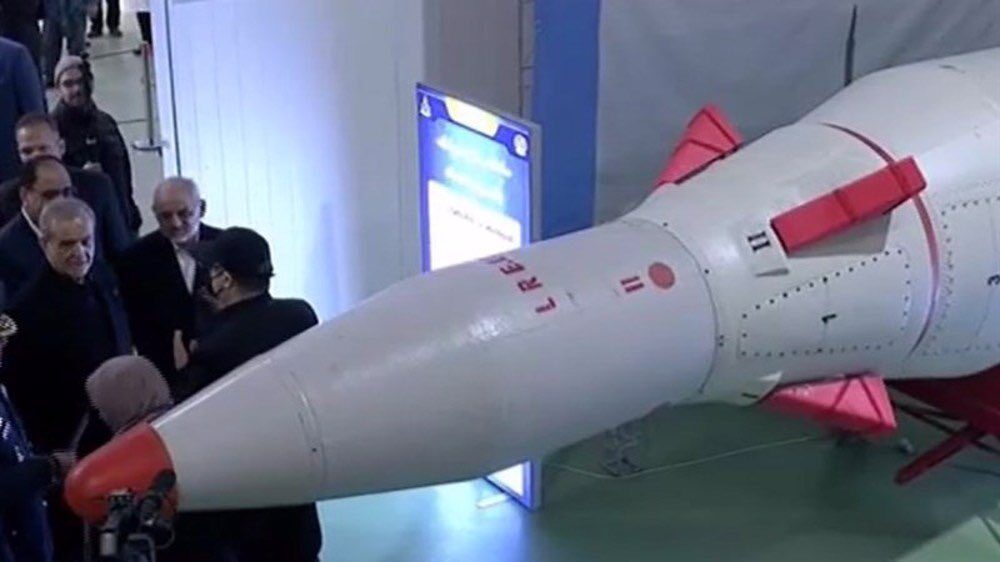Iran Unveils New Ballistic Missile, Tests Long-Range Cruise Missile
Iran has unveiled a new long-range ballistic missile and tested an advanced anti-ship cruise missile, further expanding its military capabilities as tensions with the West persist. The announcements, made over the weekend, highlight Iran’s continued investment in its missile program, which Western governments have long viewed as a regional threat.
On Sunday, Iranian President Masoud Pezeshkian attended a ceremony in Tehran to introduce the Etemad, a ballistic missile capable of traveling 1,700 kilometers (1,060 miles). The missile’s range places much of the Middle East, including Israel, within striking distance. Speaking at the event, Pezeshkian said Iran’s military advancements were intended to prevent foreign aggression, stating, “The development of defense capabilities and space technologies… aims to ensure that no country dares to attack Iranian territory.”
During the ceremony, Iran also presented three domestically developed satellites, including the Navak communications satellite and updated versions of the Pars-1 and Pars-2 imaging satellites. Officials said the imaging satellites would be used for environmental monitoring, emergency response, and urban planning.
This holiday season, give to:
Truth and understanding
The Media Line's intrepid correspondents are in Israel, Gaza, Lebanon, Syria and Pakistan providing first-person reporting.
They all said they cover it.
We see it.
We report with just one agenda: the truth.


The event took place on Iran’s National Aerospace Day and just days before the country marks the 46th anniversary of the 1979 Islamic Revolution. Military demonstrations and weapons unveilings are often timed to coincide with national celebrations, reinforcing Iran’s assertion of self-reliance in defense technology.
A day before the missile unveiling, Iran’s Islamic Revolutionary Guard Corps (IRGC) announced the successful test of the Ghadr-380, an anti-ship cruise missile with a range of more than 1,000 kilometers (620 miles). According to Gen. Ali Reza Tangsiri, commander of the IRGC navy, the missile has anti-jamming capabilities and can be launched from underground facilities with minimal preparation. It was reportedly fired from central Iran into the Sea of Oman, an area where US naval forces frequently operate.
Iranian state television aired footage of an underground missile facility along the southern coast, reinforcing Tehran’s claim that it has built extensive networks to protect its missile arsenal. Tangsiri declared that these weapons could turn enemy warships into a “hell,” emphasizing Iran’s efforts to enhance its maritime defenses.
Iran has significantly expanded its missile program in recent decades, arguing that its arsenal is necessary for national security. The country has been under various arms embargoes since the 1980s and has developed its own weapons after being cut off from foreign military suppliers. However, the US and its allies see Iran’s missile advancements—along with its nuclear program—as a destabilizing force in the Middle East.
While Tehran has signaled openness to resuming nuclear negotiations, its continued missile development raises concerns about its strategic intentions. The latest tests and unveilings are likely to fuel further scrutiny from Western governments, especially as Iran’s regional influence remains a point of contention.

